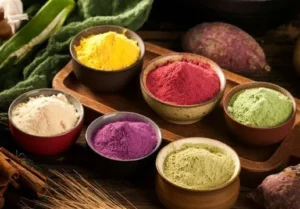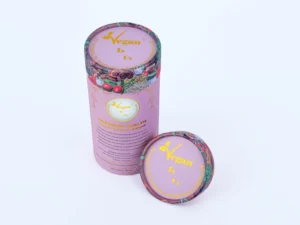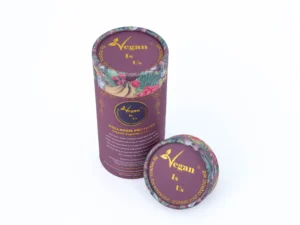The Vegan’s Guide to Eating Enough Fibre
Fibre is an essential nutrient that plays a vital role in maintaining digestive health, regulating blood sugar levels, and supporting heart health. For vegans, who follow a plant-based diet free from all animal products, ensuring an adequate intake of fibre is particularly important. A well-planned vegan diet can be naturally rich in fibre, but it requires knowledge of the best plant-based sources and strategies to incorporate them into daily meals. This comprehensive guide will explore the importance of fibre, the recommended daily intake, and practical tips for vegans to meet their fibre needs using British English and highly relevant keywords and keyphrases for SEO purposes.
Understanding Fibre: What Is It and Why Is It Important?
Fibre, also known as dietary fibre or roughage, is a type of carbohydrate that the body cannot digest. Unlike other carbohydrates, which are broken down into sugars, fibre passes through the digestive system relatively intact. There are two main types of fibre: soluble and insoluble.
Soluble Fibre
Soluble fibre dissolves in water to form a gel-like substance. It helps to slow down digestion, which can aid in regulating blood sugar levels and lowering cholesterol. Foods rich in soluble fibre include oats, barley, nuts, seeds, beans, lentils, peas, and some fruits and vegetables.
Insoluble Fibre
Insoluble fibre does not dissolve in water and adds bulk to the stool, helping to prevent constipation and promote regular bowel movements. It is found in whole grains, wheat bran, vegetables, and legumes.
Health Benefits of Fibre
- Digestive Health: Fibre aids in maintaining a healthy digestive system by preventing constipation and promoting regular bowel movements. It can also help prevent digestive disorders such as diverticulitis and irritable bowel syndrome (IBS).
- Heart Health: Soluble fibre can help lower LDL (bad) cholesterol levels, reducing the risk of heart disease. It also helps regulate blood pressure and inflammation.
- Blood Sugar Control: Fibre slows the absorption of sugar, helping to control blood sugar levels and reduce the risk of type 2 diabetes.
- Weight Management: High-fibre foods are often more filling, which can help control appetite and support weight management.
- Gut Health: Fibre acts as a prebiotic, feeding the beneficial bacteria in the gut and promoting a healthy microbiome.
Recommended Daily Fibre Intake
The British Nutrition Foundation recommends that adults aim for at least 30 grams of fibre per day. However, many people in the UK fall short of this target, with the average intake being around 20 grams per day. For vegans, who typically consume more plant-based foods, meeting the recommended fibre intake is often easier, but it still requires careful planning.
Top Vegan Sources of Fibre
A vegan diet can be naturally high in fibre, as many plant-based foods are rich in this nutrient. Here are some of the best vegan sources of fibre:
1. Whole Grains
Whole grains are an excellent source of both soluble and insoluble fibre. They include:
- Oats: A bowl of porridge made with oats can provide a significant amount of soluble fibre. Oats are also versatile and can be used in baking, smoothies, and snacks.
- Brown Rice: Unlike white rice, brown rice retains its bran and germ, making it a good source of fibre.
- Quinoa: This pseudo-grain is not only high in fibre but also a complete protein, making it a staple in many vegan diets.
- Whole Wheat Bread and Pasta: Opt for whole grain varieties to increase your fibre intake.
- Barley: This grain is particularly high in soluble fibre and can be used in soups, stews, and salads.
2. Legumes
Legumes, including beans, lentils, and peas, are powerhouse foods for vegans. They are rich in both fibre and protein, making them an essential part of a plant-based diet.
- Lentils: With around 8 grams of fibre per 100 grams, lentils are a versatile ingredient that can be used in soups, stews, and salads.
- Chickpeas: These can be used to make hummus, added to salads, or roasted for a crunchy snack.
- Black Beans: High in fibre and protein, black beans are great in Mexican dishes, soups, and salads.
- Kidney Beans: These beans are a good source of fibre and can be used in chilli, salads, and casseroles.
- Peas: Green peas, split peas, and chickpeas are all high in fibre and can be used in a variety of dishes.
3. Fruits
Fruits are not only delicious but also a great source of fibre. Some of the best high-fibre fruits include:
- Apples: An apple a day can contribute to your fibre intake, especially if eaten with the skin on.
- Pears: Like apples, pears are high in fibre, particularly when consumed with the skin.
- Berries: Raspberries, blackberries, and strawberries are all high in fibre and can be added to breakfast cereals, smoothies, or eaten as a snack.
- Bananas: While slightly lower in fibre than some other fruits, bananas are still a good source and are easy to incorporate into your diet.
- Avocados: Although technically a fruit, avocados are unique in that they are high in healthy fats as well as fibre.
4. Vegetables
Vegetables are another key component of a high-fibre vegan diet. Some of the best options include:
- Broccoli: This cruciferous vegetable is high in fibre and can be steamed, roasted, or added to stir-fries.
- Carrots: Carrots are a good source of fibre, especially when eaten raw.
- Sweet Potatoes: These are not only high in fibre but also rich in vitamins and minerals.
- Brussels Sprouts: These small cabbages are packed with fibre and can be roasted, steamed, or sautéed.
- Spinach and Kale: These leafy green are high in fibre and can be used in salads, smoothies, and cooked dishes.
5. Nuts and Seeds
Nuts and seeds are not only a good source of healthy fats and protein but also provide a decent amount of fibre.
- Chia Seeds: These tiny seeds are incredibly high in fibre and can be added to smoothies, yoghurt, or used to make chia pudding.
- Flaxseeds: Ground flaxseeds are a great source of fibre and can be added to baked goods, smoothies, or oatmeal.
- Almonds: A handful of almonds can provide a good amount of fibre and make for a satisfying snack.
- Pumpkin Seeds: These seeds are high in fibre and can be sprinkled on salads, added to granola, or eaten on their own.
6. Other High-Fibre Foods
- Popcorn: Air-popped popcorn is a whole grain and a good source of fibre. Just be mindful of added butter and salt.
- Dark Chocolate: In moderation, dark chocolate with a high cocoa content can contribute to your fibre intake.
- Coconut: Both fresh and dried coconut are high in fibre and can be used in a variety of dishes.
Practical Tips for Increasing Fibre Intake on a Vegan Diet
While a vegan diet can be naturally high in fibre, it’s important to ensure that you’re getting enough from a variety of sources. Here are some practical tips to help you increase your fibre intake:
1. Start Your Day with a High-Fibre Breakfast
Breakfast is an excellent opportunity to kickstart your fibre intake for the day. Consider the following options:
- Porridge: Made with oats, topped with fruits, nuts, and seeds.
- Whole Grain Toast: Choose whole grain or seeded bread and top with avocado, nut butter, or hummus.
- Smoothies: Blend fruits, leafy greens, and chia or flaxseeds for a fibre-rich start to the day.
2. Incorporate Legumes into Your Meals
Legumes are a staple in a vegan diet and can be easily incorporated into various meals:
- Soups and Stews: Add lentils, chickpeas, or beans to soups and stews for a fibre boost.
- Salads: Toss cooked legumes into salads for added texture and nutrition.
- Dips and Spreads: Make hummus or bean dips to enjoy with vegetables or whole grain crackers.
3. Snack on High-Fibre Foods
Choose snacks that are high in fibre to keep you full and satisfied between meals:
- Fresh Fruits: Apples, pears, and berries make for convenient and healthy snacks.
- Nuts and Seeds: A handful of almonds, walnuts, or pumpkin seeds can provide a fibre boost.
- Vegetable Sticks: Pair carrot, cucumber, or celery sticks with hummus or guacamole.
4. Choose Whole Grains Over Refined Grains
Opt for whole grain versions of bread, pasta, rice, and other grains to increase your fibre intake:
- Whole Grain Bread: Look for bread that lists whole grains as the first ingredient.
- Brown Rice and Quinoa: Substitute white rice with brown rice or quinoa for a fibre-rich alternative.
- Whole Wheat Pasta: Choose whole wheat or legume-based pasta for a higher fibre content.
5. Add Vegetables to Every Meal
Vegetables are a versatile and easy way to increase your fibre intake:
- Breakfast: Add spinach, tomatoes, or mushrooms to your morning plant-based omelette or tofu scramble.
- Lunch: Include a variety of vegetables in your salads, sandwiches, or wraps.
- Dinner: Roast, steam, or sauté vegetables as a side dish or incorporate them into main courses.
6. Experiment with New Recipes
Trying new recipes can help you discover new ways to incorporate high-fibre foods into your diet:
- Grain Bowls: Create bowls with a base of quinoa or brown rice, topped with vegetables, legumes, and a tasty dressing.
- Vegan Baking: Use whole grain flours, oats, and nuts in your baking to increase the fibre content of your treats.
- International Cuisine: Explore cuisines that naturally incorporate high-fibre ingredients, such as Indian, Middle Eastern, and Mediterranean.
7. Stay Hydrated
Fibre works best when it absorbs water, so it’s important to stay hydrated throughout the day. Aim to drink plenty of water, especially when increasing your fibre intake, to help prevent digestive discomfort.
8. Gradually Increase Fibre Intake
If you’re not used to eating a lot of fibre, it’s important to increase your intake gradually to avoid digestive issues such as bloating and gas. Start by adding small amounts of high-fibre foods to your diet and gradually increase over time.
9. Read Food Labels
When shopping for packaged foods, check the nutrition labels for fibre content. Look for products that are high in fibre and low in added sugars and unhealthy fats.
10. Consider Fibre Supplements
If you’re struggling to meet your fibre needs through diet alone, consider talking to a healthcare professional about fibre supplements. Psyllium husk, for example, is a popular vegan-friendly fibre supplement that can be added to smoothies or water.
Potential Challenges and How to Overcome Them
While a vegan diet can be rich in fibre, there are some potential challenges to be aware of:
1. Digestive Discomfort
Increasing your fibre intake too quickly can lead to digestive discomfort, such as bloating, gas, and cramping. To avoid this, increase your fibre intake gradually and drink plenty of water.
2. Nutrient Absorption
High-fibre diets can sometimes interfere with the absorption of certain nutrients, such as iron and zinc. To mitigate this, ensure you’re consuming a varied diet and consider pairing high-fibre foods with sources of vitamin C, which can enhance iron absorption.
3. Caloric Intake
Some high-fibre foods, such as nuts and seeds, are also calorie-dense. While they are nutritious, it’s important to be mindful of portion sizes to avoid excessive calorie intake.
4. Availability of High-Fibre Foods
Depending on where you live, it may be challenging to find certain high-fibre foods. In such cases, focus on locally available options and consider ordering specialty items online if necessary.
Sample High-Fibre Vegan Meal Plan
To help you get started, here’s a sample high-fibre vegan meal plan that provides over 30 grams of fibre per day:
| Day | Meal | Menu |
|---|---|---|
| Day 1 | Breakfast | Porridge made with oats, almond milk, chia seeds, topped with berries and a sprinkle of flaxseeds. A cup of green tea. |
| Snack | An apple with a handful of almonds. | |
| Lunch | Quinoa salad with chickpeas, cherry tomatoes, cucumber, spinach, and a lemon-tahini dressing. A slice of whole grain bread. | |
| Snack | Carrot and cucumber sticks with hummus. | |
| Dinner | Lentil and vegetable curry served with brown rice. A side of steamed broccoli. | |
| Dessert | A small square of dark chocolate. | |
| Day 2 | Breakfast | Smoothie made with spinach, banana, chia seeds, almond milk, and a scoop of plant-based protein powder. A slice of whole grain toast with avocado. |
| Snack | A pear with a handful of walnuts. | |
| Lunch | Whole grain wrap filled with black beans, mixed greens, salsa, and guacamole. A side of roasted sweet potato wedges. | |
| Snack | A handful of pumpkin seeds. | |
| Dinner | Stir-fried tofu with mixed vegetables (broccoli, bell peppers, carrots) served over brown rice. A side of miso soup. | |
| Dessert | A small bowl of mixed berries. | |
| Day 3 | Breakfast | Chia pudding made with chia seeds, coconut milk, and topped with sliced banana and a drizzle of maple syrup. A cup of herbal tea. |
| Snack | A handful of mixed nuts and dried fruit. | |
| Lunch | Buddha bowl with quinoa, roasted Brussels sprouts, chickpeas, avocado, and a tahini dressing. A side of mixed greens. | |
| Snack | A small bowl of air-popped popcorn. | |
| Dinner | Spaghetti made with whole wheat pasta and a lentil bolognese sauce. A side of garlic bread made with whole grain bread. | |
| Dessert | A small piece of dark chocolate and a few strawberries. |
Key Takeaway
Eating enough fibre on a vegan diet is not only achievable but can also be delicious and varied. By incorporating a wide range of whole grains, legumes, fruits, vegetables, nuts, and seeds into your meals, you can easily meet or exceed the recommended daily fibre intake. Remember to increase your fibre intake gradually, stay hydrated, and enjoy the process of discovering new high-fibre foods and recipes. With careful planning and a focus on whole, plant-based foods, you can enjoy the numerous health benefits that a high-fibre vegan diet has to offer.
By following this comprehensive guide, you can ensure that your vegan diet is rich in fibre, supporting your overall health and well-being. Whether you’re new to veganism or a seasoned plant-based eater, these tips and meal ideas will help you meet your fibre needs and enjoy a diverse and nutritious diet.







